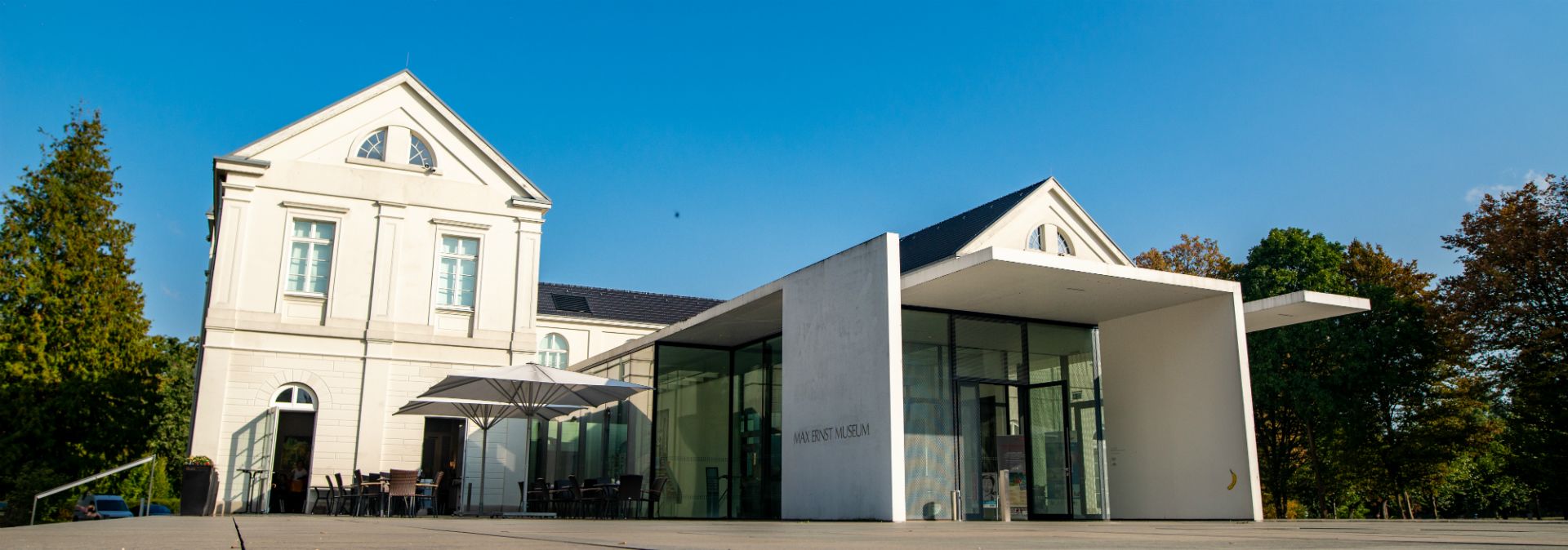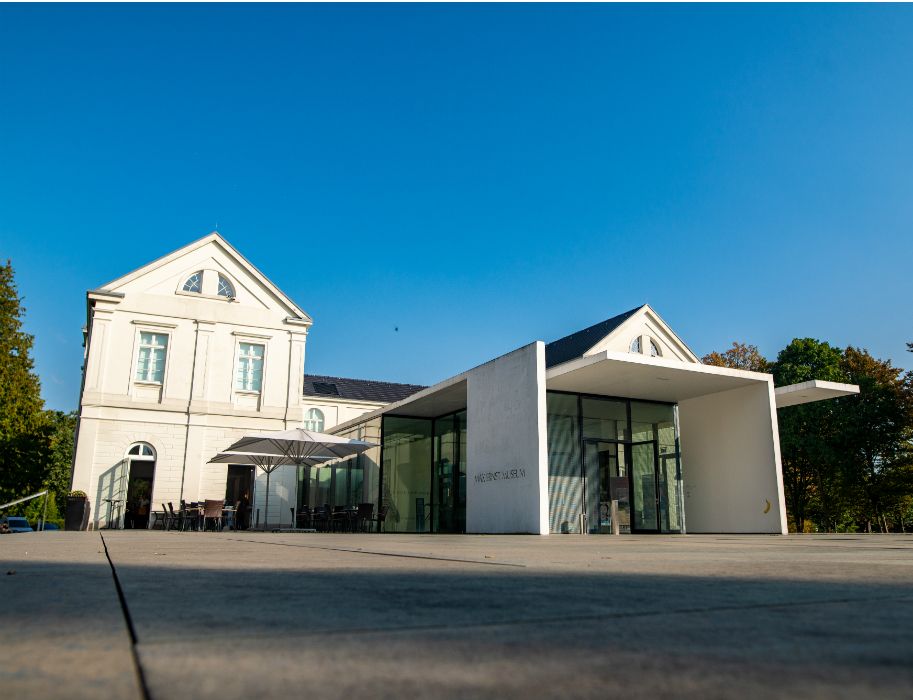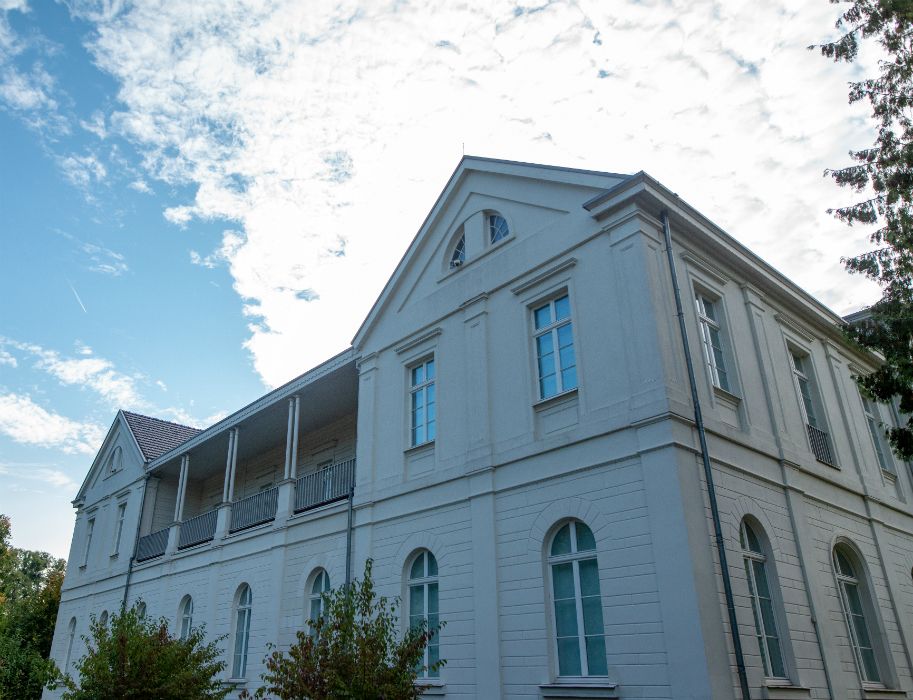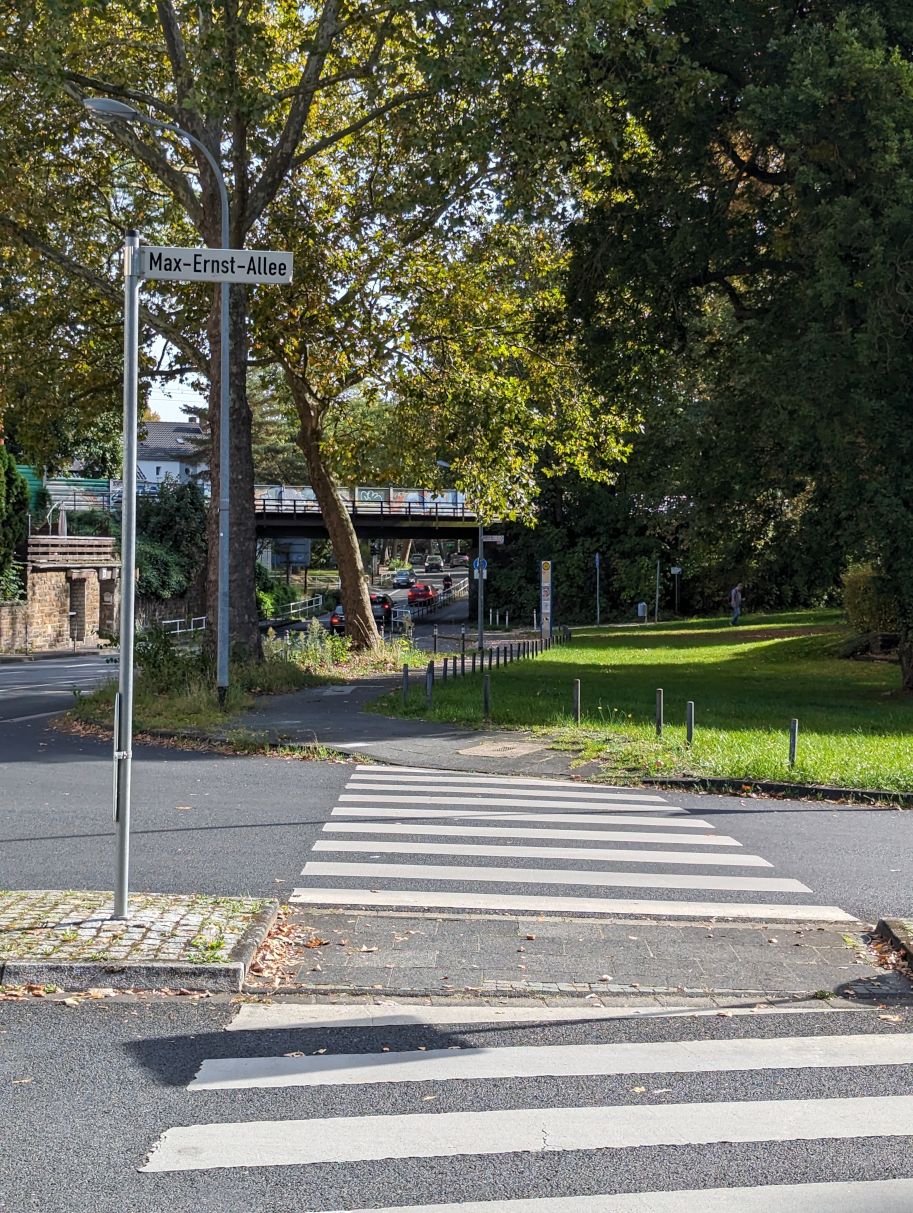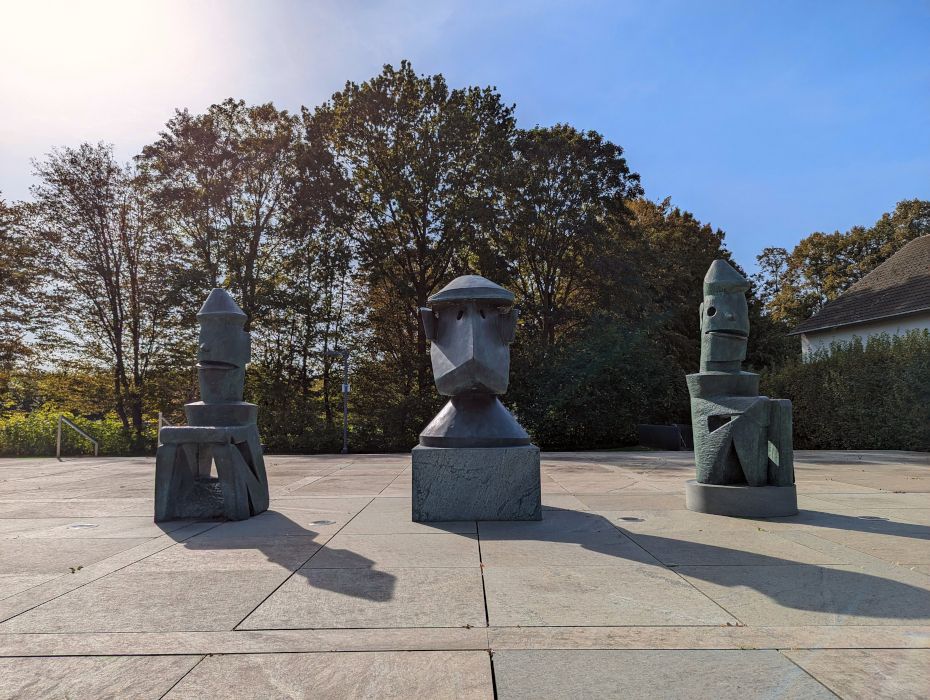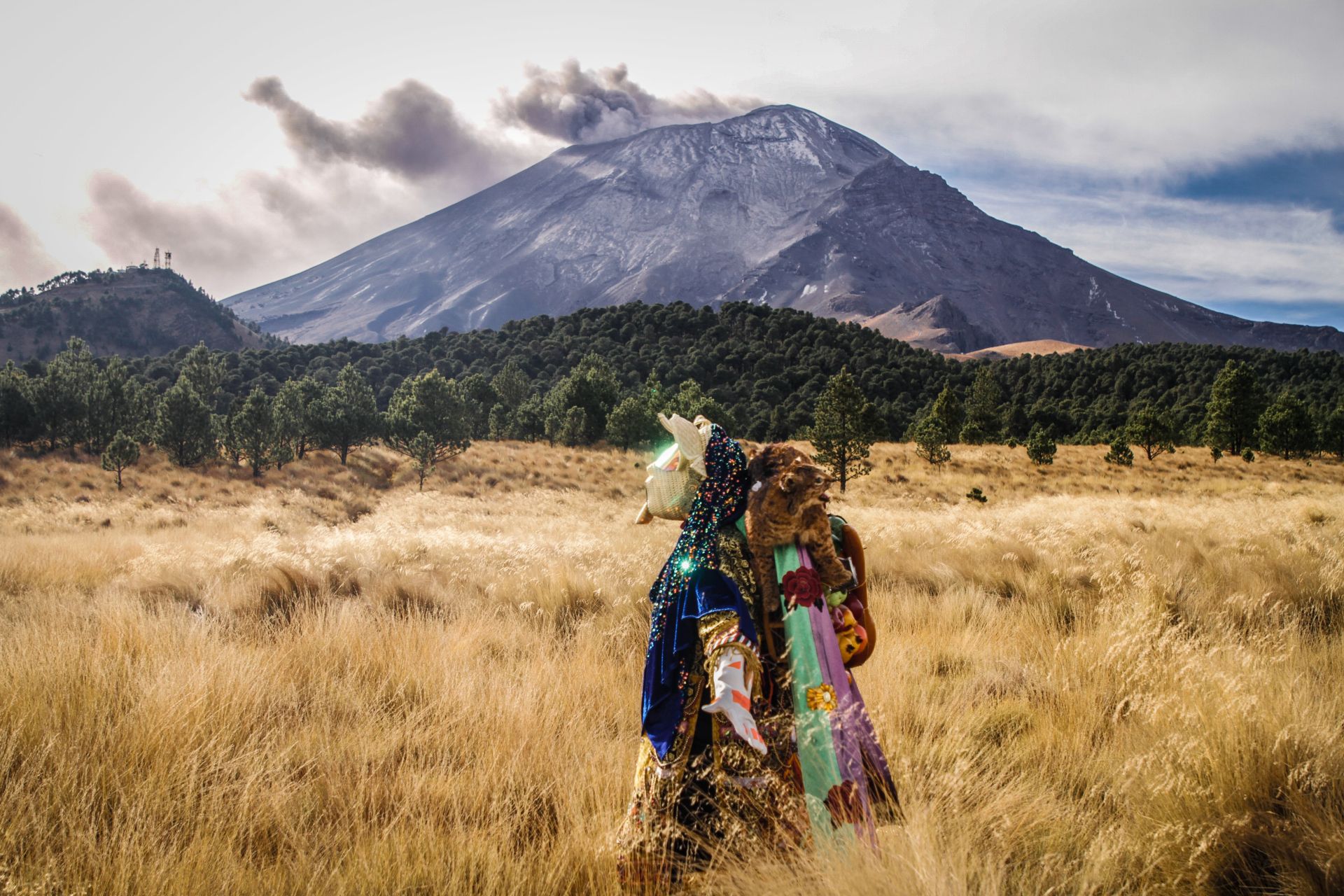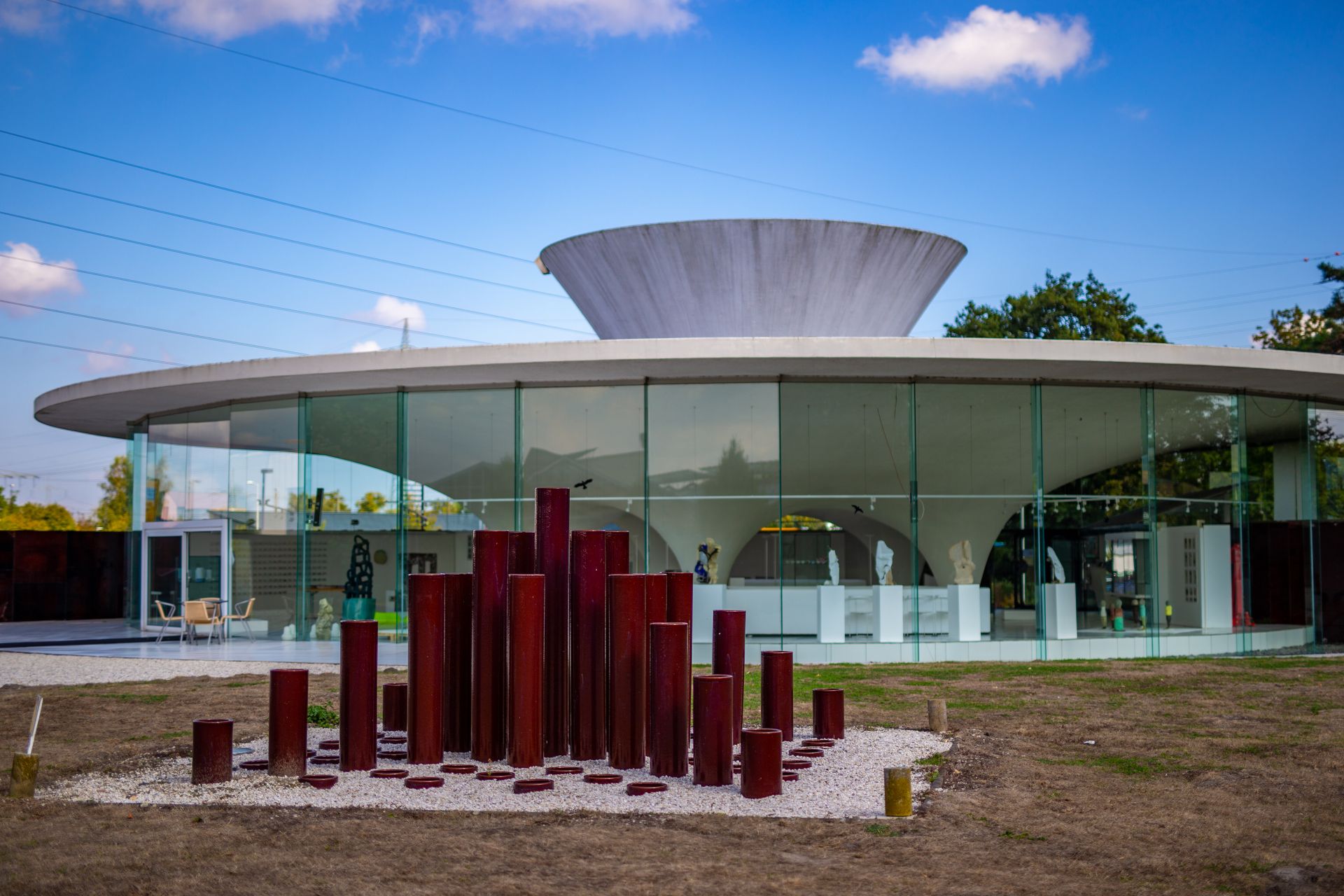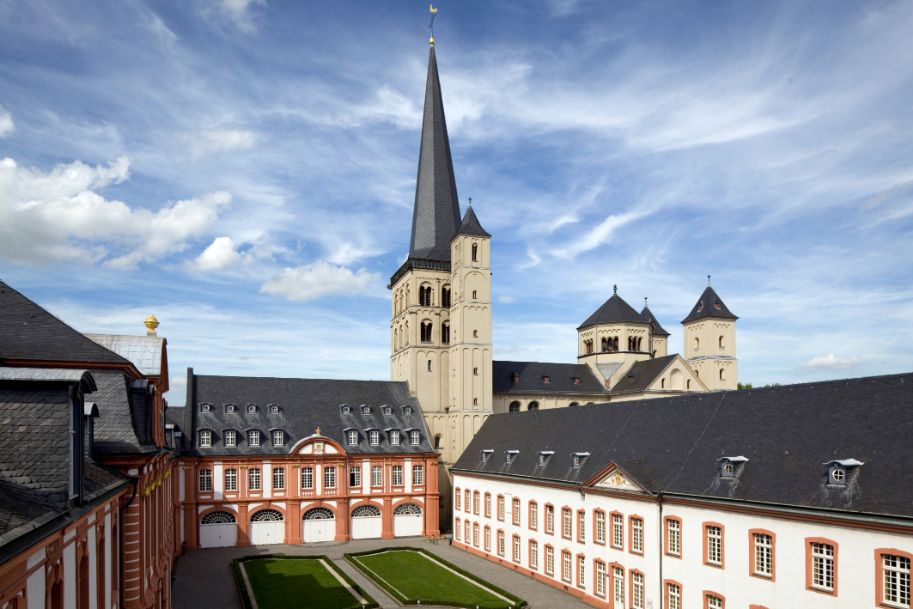The painter, sculptor and cosmopolitan Max Ernst (1891-1976) once turned down honorary citizenship of the city of Brühl because it was "incompatible with his thoughts, actions and behaviour". However, large parts of his artistic legacy returned to his hometown in the Rhineland. The Max Ernst Museum opened in the former "Brühl Pavilion" in 2005. In addition to some of his early paintings, it is able to present almost the entire graphic work and 70 sculptures by the Dadaist and Surrealist artist, who was mainly active in France and the USA.
Max Ernst was probably one of the most creative and imaginative artists of the 20th century. In his search for ever new forms of expression beyond convention and the "rule of logic", he developed techniques that offered room for mind games, associations and dreams. In this way he created bizarre figures, poetic landscapes and fantastic compositions, the pull of which the viewer cannot escape. Together with Hans Arp, he founded the Dada movement in Cologne as early as 1919, moved to Paris two years later and achieved world fame as a co-founder of the Surrealist movement.
The Max Ernst Museum of the LVR in Brühl is the only museum in the world that can look back on around seventy years of work by this exceptional artist. Not far from Augustusburg Castle, where the largest retrospective to date was shown in 1951, the Max Ernst Museum was opened in 2005 in the former "Brühl Pavilion". The three-winged neoclassical building from the 19th century was once a popular excursion destination, which Max Ernst also enjoyed visiting in his youth. A central glass pavilion and a "floating" entrance plateau were added for the museum, which houses almost all of Max Ernst's graphic works in the Schneppenheim Collection.
In addition to the graphic works, the LVR Museum's permanent exhibition also includes 70 sculptures made from everyday objects such as egg cartons, spools of thread and wires, as well as a unique collection of more than 700 photographic documents by the artist. Finally, 36 "D-paintings", all birthday and love gifts to his wife, the artist Dorothea Tanning, offer an insight into Max Ernst's soul.
However, the Max Ernst Museum in Brühl sees itself not only as a museum exhibition space, but also as a "fantasy laboratory". Since 2012, visitors have been able to try out techniques such as frottage and collage for themselves and discover their own creativity in the artist's birthplace, a building constructed in 1885 in the late classicist style, as well as in a light-flooded extension. All in the spirit of the great role model.
